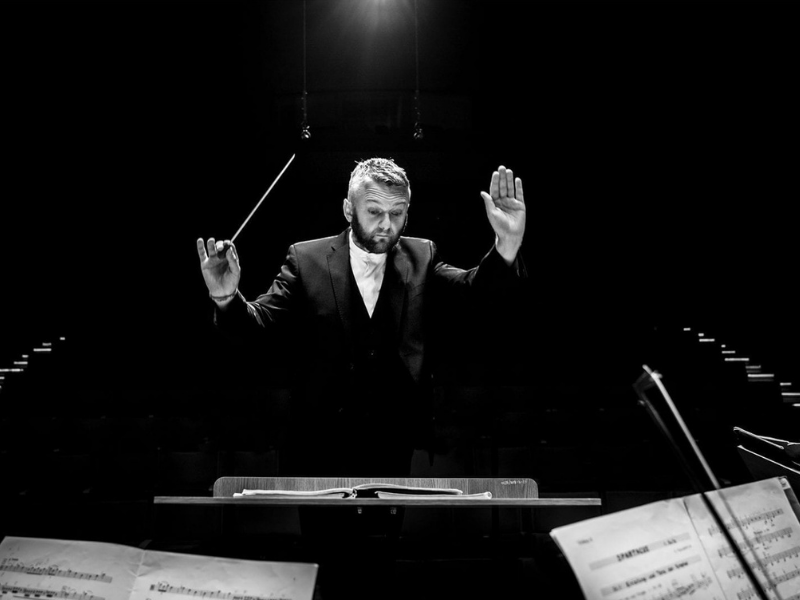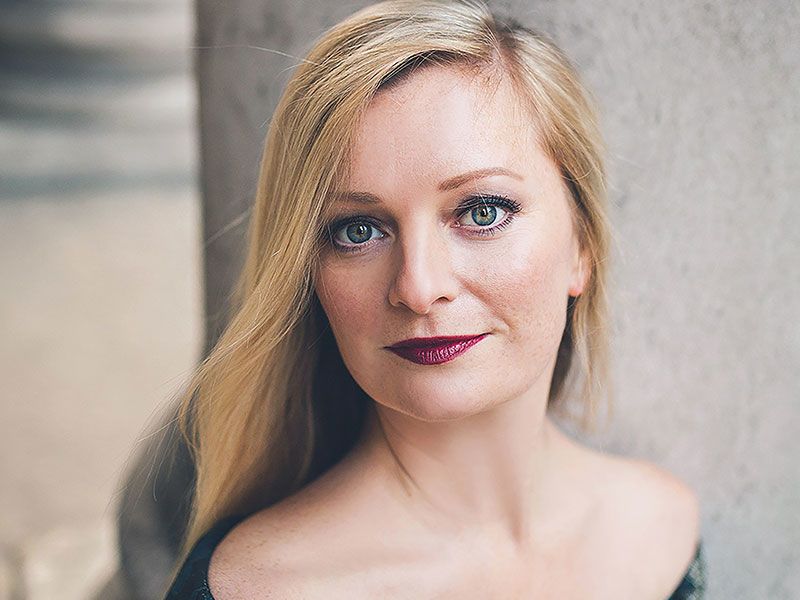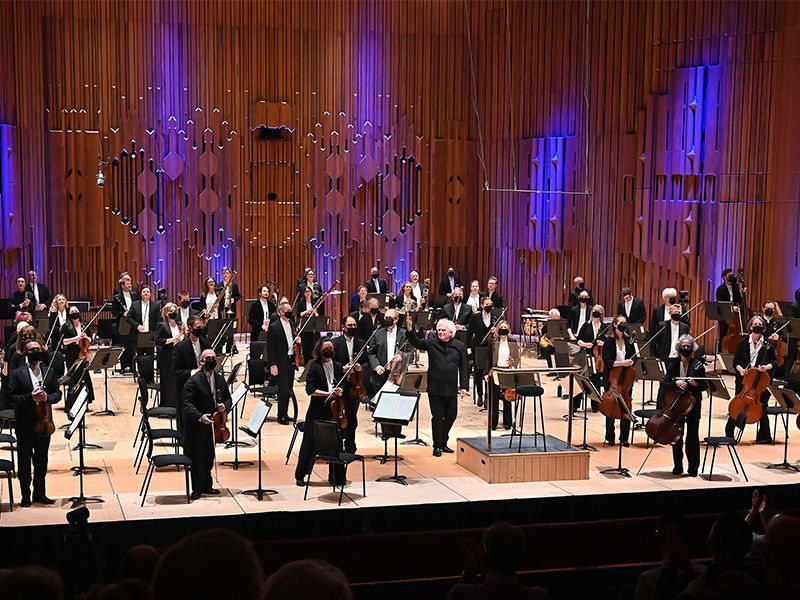LSO Half Six Fix
Mahler 4
Wednesday 8 December 2021 6.30pm
Digital Concert Guide
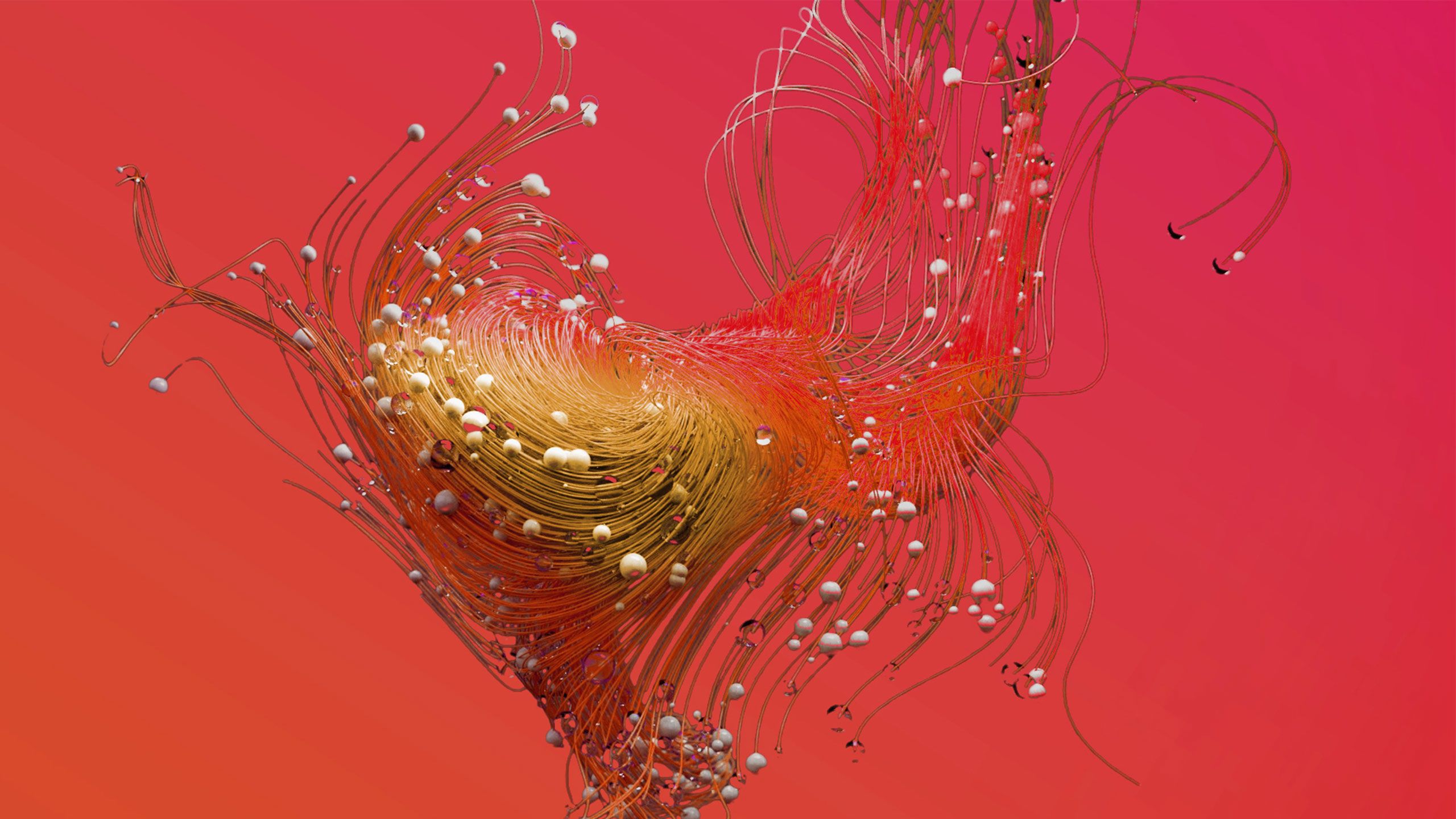
Welcome to tonight's Half Six Fix, a different way to experience the London Symphony Orchestra, with introductions from conductor Kirill Karabits and LSO Second Violin Belinda McFarlane.
YOUR DIGITAL CONCERT GUIDE
You can use your phone to view this digital guide during the concert, and discover more about the music and performers.
Navigate using the menu icon (≡) at the top of the screen.

There is free WiFi in the Concert Hall, available through the Barbican Free WiFi network.
So that everyone can have the best experience, please set your phone to silent and don’t use other apps during the music. Photos can be taken during applause at the end of the concert.
Structure your listening with the Visual Listening Guide
The Guide is designed to act as a map of important sonic landmarks in the Symphony, showing where the main musical themes and moments occur in a visually engaging way, whatever your musical background!
NB The licence to the Visual Listening Guide has now expired, but is available to purchase from the Symphony Graphique website with a 20% discount using the code LSOMAH20 at the checkout.
Opens in a new tab
Tonight's Programme
Gustav Mahler Symphony No 4
Kirill Karabits conductor & presenter
Lucy Crowe soprano
London Symphony Orchestra
NB Change of Conductor
Sir Simon Rattle has tested positive for COVID-19 and unfortunately is unable to fulfil his engagements with the LSO this month. He is currently isolating at home, with mild symptoms.
We are pleased that Kirill Karabits has agreed to step in as conductor. Tonight's programme remains unchanged.

‘Music is capable of reproducing, in its real form, the pain that tears the soul and the smile that it inebriates.’
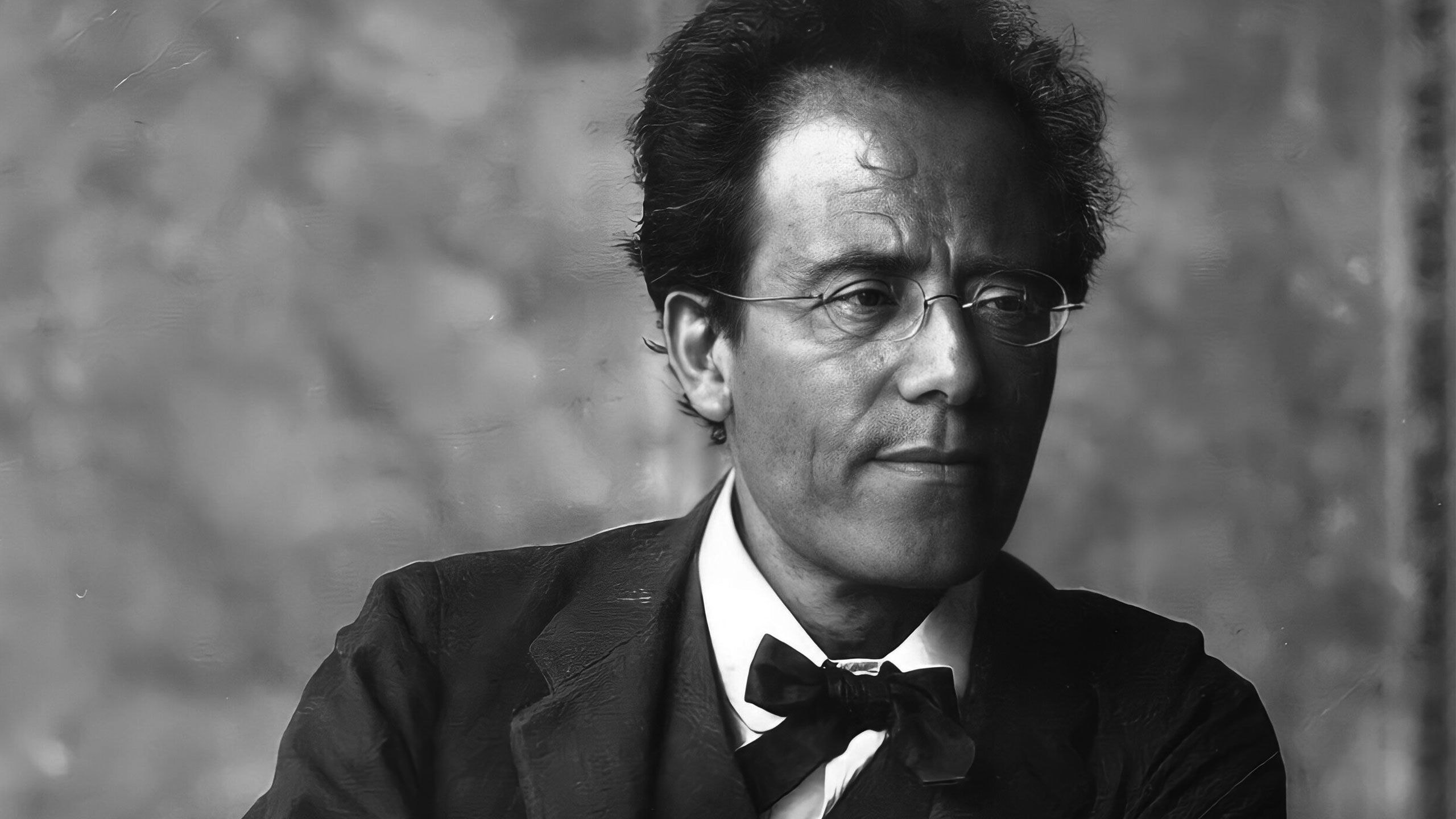
Symphony No 4 in G Major
✒️1899–1900 | ⏰60 minutes
1 Bedächtig, nicht eilen (Deliberate. Not hurried) – Recht gemächlich (Very leisurely)
2 In gemächlicher Bewegung, ohne Hast (At a leisurely pace. Without haste)
3 Ruhevoll: poco adagio (Restful)
4 Sehr behaglich (Very cosy)

Why is it that the symphonies of Gustav Mahler, more than those of any other composer, have become the benchmark by which orchestras around the world are judged?
It’s partly to do with the kaleidoscopic philosophical and expressive range driven by his all-embracing outlook. The symphony, Mahler famously said, had to ‘be like the world. It must embrace everything.’ His symphonies are accordingly strewn with references to nature and death (and the beyond) but contrasted with everyday sounds such as folk music, military fanfares or marching bands. Mahler’s symphonies are more than the playthings of a self-styled, egotistical Romantic hero: they resonate with us because his preoccupations – joy, fear, terror, love, humour and death – are also our own.
'A symphony must be like the world. It must embrace everything.'
Mahler expanded the size of the symphony orchestra to new limits, often with quadruple wind (four each of flutes, oboes, clarinets and bassoons, as opposed to two each in the typical Classical-period orchestra). He also pushed the boundaries of harmony, to the extent that the only next step, instigated by Arnold Schoenberg, was to explode the idea altogether, ushering in a dystopian, anti-harmonic world of ‘atonality’. In all these ways, Mahler elevated the symphony, so it’s no wonder that orchestras and conductors queue up to scale its heights.
At ‘only’ around an hour in length, Mahler’s Fourth is bijou compared to his mammoth Second and Third Symphonies (which run to around 80 minutes and 100 minutes respectively). It is the only one of his nine symphonies not to feature trombones or tuba. As in those two previous symphonies, he returned to one of his songs on texts from Des Knaben Wunderhorn (The Youth’s Magic Horn) – a German folk-poetry collection that was popular among German Romantics. Das himmlische Leben (Heavenly Life) became the Fourth Symphony’s finale. It presents an idyllic view of heaven, where there is dance and song, free-flowing wine, an abundance of fresh produce and, not insignificantly, unearthly music overseen by Saint Cecilia (the patron saint of music) herself.

There are allusions to childlike simplicity in the first movement, with its sleigh-bell opening, its carefree, often lyrical, themes and its tendency to move quickly from one idea to another. After a high, whistling theme on flutes, the music becomes streaked with darker visions – alarming and grotesque – like all the best children’s tales. All this eventually relaxes in a blissful reverie. The movement’s first theme (now familiar) slowly emerges again and gathers pace towards a brief ‘and that was that’ end.
Mahler originally titled the second movement ‘Death strikes up the dance for us’. A slow-whirling Ländler (a rustic version of the waltz) brings a macabre solo on a violin whose four strings are tuned a tone higher than usual. A more relaxed episode, with fluttering wind instruments, twice alternates with the Ländler.
The third movement is the lyrical heart of the symphony. Every bit as beautiful as the better-known slow movement (Adagietto) of the Fifth Symphony, its broadly arching first theme is carried by a gentle, plucked tread that both marks time and somehow also suspends it. A second theme is more troubled, the tread now more urgent, and a range of emotional ground is covered in various guises of the first theme. In the climactic outburst near the end, horns briefly foreshadow the opening theme of the finale, but the ending brings a sense of spiritual or physical transfiguration, and the violins rise celestially …
Then comes the child’s view of heaven, ‘to be sung,’ Mahler directs, ‘in a happy childlike manner: absolutely without parody’. But, as ever with Mahler, there’s a dark undercurrent – expressing the realities of a lamb and the oxen slaughtered for food. There is no grand affirmation but instead a journey into the distance.
Programme note by Edward Bhesania

Gustav Mahler
1860 (Bohemia) to 1911 (Austria)
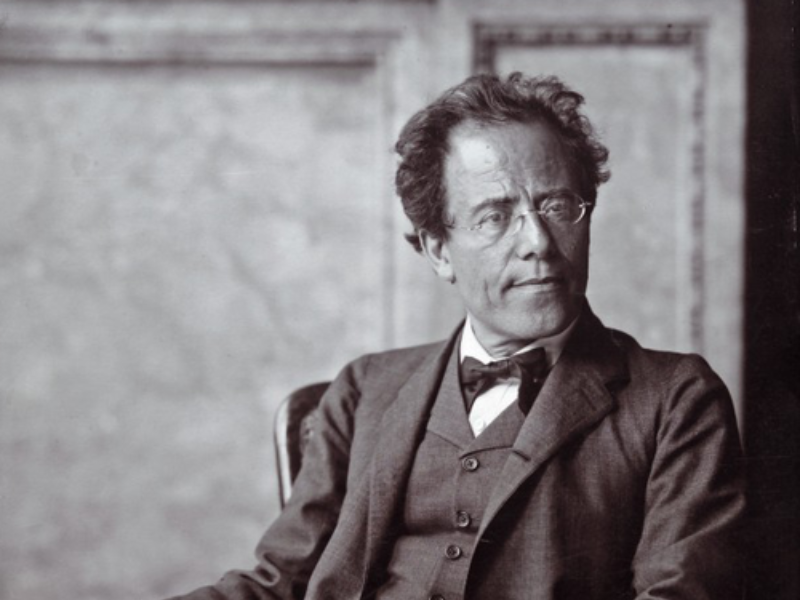
More than any composer since Ludwig van Beethoven, Gustav Mahler radically altered the course of symphonic form, broadening its scale and instrumentation, imbuing it with vast emotional range and incorporating autobiographical references. Born in Bohemia, he went to study in Vienna at the age of 15, before developing a conducting career in a succession of opera theatres.
In 1897 he became Kapellmeister at the Vienna Court Opera, converting from Judaism to Catholicism in order to do so. The demands of his conducting commitments left only the summers for composing, when he would retreat to the mountains and lakes. He was heavily drawn to the folk-like poetry collection Des Knaben Wunderhorn (The Youth’s Magic Horn, 1808), writing over 20 Wunderhorn songs and incorporating some into his Symphonies Nos 2 to 4. Five of Mahler’s siblings died in infancy, as did his own elder daughter – lending further poignancy to his Kindertotenlieder (Songs on the Death of Children, 1904).
He worked in New York at the Metropolitan Opera and Philharmonic Orchestra, but fell victim to heart disease: he died before completing his tenth numbered symphony, soon after the bitter discovery of his wife Alma’s affair with the architect Walter Gropius.

LSO Music Director Rattled by Mahler
It was the ‘totally transfiguring experience’ of hearing Mahler – the Second Symphony – as an 11-year-old in Liverpool that inspired the London Symphony Orchestra's Music Director Simon Rattle to take up the baton.
‘My incurable virus – the wanting-to-conduct-Mahler virus – started there and then,’ Rattle has said. ‘It’s because of that evening that I’m a conductor.’
Transported to an Alternative Plane
Rattle was in an airport lounge when he started looking at the newly published performing version of Mahler’s incomplete 10th Symphony. It proved a distraction. ‘I missed the last plane to Glasgow,’ Rattle confessed. ‘So foolish! I had to stay in the airport hotel and take the first flight the next day. All because of Mahler.’

Hearing Voices
Mahler’s Fourth Symphony wasn’t his first to feature voices. While Beethoven called for solo voices and chorus only in his Ninth and final symphony, Mahler incorporated voices into four of his numbered symphonies:
Symphony No 2: soprano and alto soloists, plus choir
Symphony No 3: alto soloist, plus female choir and boys’ choir
Symphony No 4: soprano soloist
Symphony No 8: three sopranos, two altos, tenor, baritone and bass soloists, plus two choirs and a children’s choir
Notes for Notes
In 2016, Mahler’s autographed manuscript of his Second Symphony sold at Sotheby’s in London for £4,546,250, becoming the most expensive music manuscript ever to be sold at auction.
Image: Sothebys
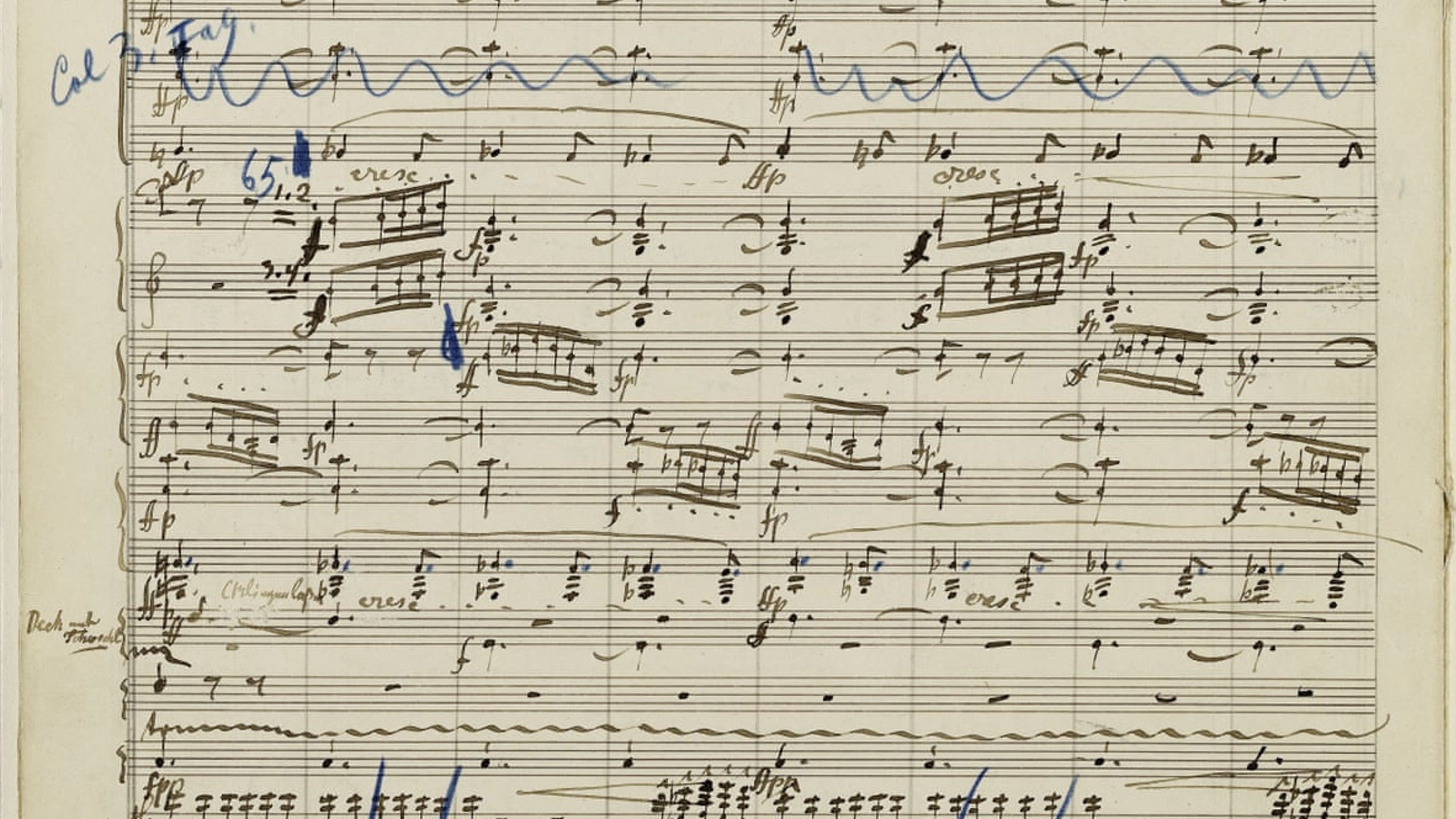
One Ninth, no Tenth
The 'curse of the ninth symphony' loomed over composers from the 19th century onwards, based on the fact that a number of them – Schubert, Beethoven, Dvořák and Bruckner included – subsequently failed to complete a tenth. After composing his Eighth Symphony, Mahler refused to label his next one ‘No 9’ (he instead called it Das Lied von der Erde, The Song of the Earth). Having later completed a Symphony No 9, and thinking he had defied fate, he died before completing his No 10.
Text & Translation
Das himmlische Leben
The heavenly life
Wir geniessen die himmlischen Freuden,
Drum tun wir das Irdische meiden,
Kein weltlich Getümmel
Hört man nicht im Himmel!
Lebt alles in sanftester Ruh’!
Wir führen ein englisches Leben!
Sind dennoch ganz lustig daneben!
Wir tanzen und springen,
Wir hüpfen und singen!
Sankt Peter im Himmel sieht zu!
We enjoy the heavenly pleasures
and avoid earthly things.
No worldly tumult
can be heard in Heaven!
Everything lives in the sweetest peace!
We lead an angelic life!
Nevertheless we are very merry:
we dance and leap,
hop and sing!
Meanwhile, St Peter in the sky looks on.
Johannes das Lämmlein auslasset,
Der Metzger Herodes drauf passet!
Wir führen ein geduldig’s,
Unschuldig’s, geduldig’s,
Ein liebliches Lämmlein zu Tod!
Sankt Lucas den Ochsen tät schlachten
Ohn’ einig’s Bedenken und Achten,
Der Wein kost’ kein Heller
Im himmlischen Keller,
Die Englein, die backen das Brot.
St John has let his little lamb go
and the butcher Herod looks on!
We lead a patient,
innocent, patient,
a dear little lamb to death!
St Luke slaughters oxen
without giving it thought or attention.
Wine costs not a penny
in Heaven’s cellar;
and the angels bake the bread.
Gut’ Kräuter von allerhand Arten,
Die wachsen im himmlischen Garten!
Gut’ Spargel, Fisolen
Und was wir nur wollen!
Ganze Schüsseln voll sind uns bereit!
Gut Äpfel, gut’ Birn’ und gut’ Trauben!
Die Gärtner, die alles erlauben!
Willst Rehbock, willst Hasen,
Auf offener Straßen
Sie laufen herbei!
Good vegetables of all sorts
grow in Heaven’s garden!
Good asparagus, beans
and whatever we wish!
Bowls are heaped full, ready for us!
Good apples, good pears and good grapes!
The gardener permits us everything!
Would you like roebuck, would you like hare?
They run free
In the very streets!
Sollt’ ein Fasttag etwa kommen,
Alle Fische gleich mit Freuden angeschwommen!
Dort läuft schon Sankt Peter
Mit Netz und mit Köder
Zum himmlischen Weiher hinein.
Sankt Martha die Köchin muß sein.
Should a fast-day arrive,
all the fish swim up to us with joy!
Then off runs St Peter
with his net and bait
to the heavenly pond.
St Martha must be the cook.
Kein’ Musik ist ja nicht auf Erden,
Die uns’rer verglichen kann werden.
Elftausend Jungfrauen
Zu tanzen sich trauen!
Sankt Ursula selbst dazu lacht!
Cäcilia mit ihren Verwandten
Sind treffliche Hofmusikanten!
Die englischen Stimmen
Ermuntern die Sinnen,
Dass alles für Freuden erwacht.
No music on earth
can be compared to ours.
Eleven thousand maidens
dare to dance!
Even St Ursula herself is laughing!
Cecilia and all her relatives
make splendid court musicians!
The angelic voices
rouse the senses
so that everything awakens with joy.
Translation anonymous
Tonight's Artists

Kirill Karabits
conductor
Kirill Karabits has been Chief Conductor of the Bournemouth Symphony Orchestra for 13 years and their relationship has been celebrated worldwide.
Kirill has worked with many of the leading ensembles of Europe, Asia and North America, including the Cleveland, Philadelphia, San Francisco and Chicago Symphony orchestras, Munich Philharmonic, Orchestre National de France, Philharmonia Orchestra, Vienna Symphony, Rotterdam Philharmonic, Yomiuri Nippon Symphony Orchestra, Orchestra Filarmonica del Teatro La Fenice and the BBC Symphony Orchestra – including a concertante version of Bartók's Duke Bluebeard’s Castle at the Barbican. Kirill enjoys a special relationship with the Russian National Orchestra with whom he returned to the Edinburgh Festival in the 2018/19 season, and more recently embarked on extensive European and North American tours with Mikhail Pletnev which included his New York debut at the Lincoln Center.
A prolific opera conductor, Kirill has worked with the Deutsche Oper, Opernhaus Zürich and Oper Stuttgart , Glyndebourne Festival Opera, Staatsoper Hamburg, English National Opera, Bolshoi Theatre and he conducted a performance of The Flying Dutchman at the Wagner Geneva Festival in celebration of the composer’s anniversary. Music Director of the Deutsches Nationaltheatre Weimar from 2016–19, Kirill conducted acclaimed productions of Wagner's Die Meistersinger von Nürnberg and Tannhäuser as well as Mozart's DaPonte Cycle (The Marriage of Figaro, Don Giovanni, and Così fan tutte).
Working with the next generation of bright musicians is of great importance to Kirill. As Artistic Director of I, CULTURE Orchestra he conducted them on their European tour in August 2015 with Lisa Batiashvili as soloist and a summer festivals tour in 2018, including concerts at the Concertgebouw in Amsterdam and the Montpellier Festival. In 2012 and 2014 he conducted the televised finals of the BBC Young Musician of the Year Award (working with the Royal Northern Sinfonia and BBC Scottish Symphony Orchestra), and has recently debuted with the National Youth Orchestra of Great Britain on a UK tour including a sold out and critically acclaimed performance at the Barbican.
Kirill was named Conductor of the Year at the 2013 Royal Philharmonic Society Music Awards.
Lucy Crowe
soprano
Born in Staffordshire, Lucy Crowe studied at the Royal Academy of Music, where she is a Fellow.
With repertoire ranging from Purcell, Handel and Mozart to Donizetti’s Adina (L’elisir d’amore), Verdi’s Gilda (Rigoletto) and Janáček's Vixen (The Cunning Little Vixen) she has sung with opera companies throughout the world, including the Royal Opera House Covent Garden, the Glyndebourne Festival, English National Opera, the Teatro Real Madrid, the Deutsche Oper Berlin, the Bavarian State Opera, Munich and the Metropolitan Opera New York.
In concert, she has performed with many of the world's finest conductors and orchestras including the City of Birmingham Symphony Orchestra (with Emmanuelle Haïm, Sakari Oramo and Andris Nelsons), the Berlin Philharmonic (Daniel Harding and Nelsons), Vienna Philharmonic (Nelsons), Orchestra of the Age of Enlightenment (Richard Egarr), Scottish Chamber Orchestra (Yannick NézetSéguin), the Monteverdi Orchestra (Sir John Eliot Gardiner), the Orchestra dell’Accademia Nazionale di Santa Cecilia (Sir Antonio Pappano) and the London Symphony Orchestra (Sir Simon Rattle).
Her recordings include Mendelssohn’s Lobgesang with the LSO and Gardiner; Handel’s Il Pastor Fido and Handel & Vivaldi with La Nuova Musica and David Bates for Harmonia Mundi; Lutoslawski with the BBC Symphony Orchestra and Gardner, Handel’s Alceste with the Early Opera Company and Christian Curnyn, and Eccles’ The Judgement of Paris all for Chandos; a solo Handel disc – ll Caro Sassone – with The English Concert and Harry Bicket for Harmonia Mundi, and Handel’s Queens with London Early. Her debut disc for Linn records featuring Berg, Strauss and Schoenberg was released in August 2021.
London Symphony Orchestra
At the London Symphony Orchestra we strive to inspire hearts and minds through world-leading music-making. We were established in 1904, as one of the first orchestras shaped by its musicians.
Through inspiring music, a world-leading learning and community programme and technological innovations, our reach extends far beyond the concert hall.
On Stage
Guest Leader
Sergey Ostrovsky
First Violins
Janice Graham
Clare Duckworth
Ginette Decuyper
Laura Dixon
Maxine Kwok
William Melvin
Claire Parfitt
Elizabeth Pigram
Laurent Quénelle
Harriet Rayfield
Sylvain Vasseur
Caroline Frenkel
Jan Regulski
Second Violins
Julián Gil Rodríguez
Thomas Norris
Sarah Quinn
David Ballesteros
Matthew Gardner
Naoko Keatley
Alix Lagasse
Belinda McFarlane
Iwona Muszynska
Andrew Pollock
Paul Robson
Miya Väisänen
Violas
Edward Vanderspar
Gillianne Haddow
Malcolm Johnston
Germán Clavijo
Stephen Doman
Sofia Silva Sousa
Robert Turner
Luca Casciato
Errika Horsley
Nancy Johnson
Cellos
David Cohen
Jennifer Brown
Noël Bradshaw
Eve-Marie Caravassilis
Daniel Gardner
Laure Le Dantec
Amanda Truelove
Peteris Sokolovskis
Double Basses
Rodrigo Moro Martin
Patrick Laurence
Matthew Gibson
Thomas Goodman
Joe Melvin
Jani Pensola
Simo Väisänen
Flutes
Amy Yule
Patricia Moynihan
Piccolos
Sharon Williams
Rebecca Larsen
Oboes
Juliana Koch
Olivier Stankiewicz
Rosie Jenkins
Cor Anglais
Stéphane Suchanek
Clarinets
Chris Richards
Chi-Yu Mo
Bass Clarinet
Thomas Lessels
Soprano Saxophone
Kyle Horch
Bassoons
Rachel Gough
Joost Bosdijk
Contra Bassoon
Dominic Morgan
Horns
Eirik Haaland
Clément Charpentier-Leroy
Annemarie Federle
David Sztankov
Fabian van de Geest
Trumpets
James Fountain
Kaitlin Wild
David Geoghegan
Trombones
Isobel Daws
Tom Berry
Bass Trombone
Paul Milner
Timpani
Nigel Thomas
Percussion
Neil Percy
David Jackson
Sam Walton
Tom Edwards
Harp
Bryn Lewis
LSO String Experience Scheme
Established in 1992, the LSO String Experience Scheme enables young string players at the start of their professional careers to gain work experience by playing in rehearsals and concerts with the LSO. The musicians are treated as professional ‘extras’, and receive fees in line with LSO section players.
Supported by the Idlewild Trust, Thriplow Charitable Trust and Barbara Whatmore Charitable Trust.
Performing tonight are:
Silvestrs Kalniņš
Yat Hei Lee


